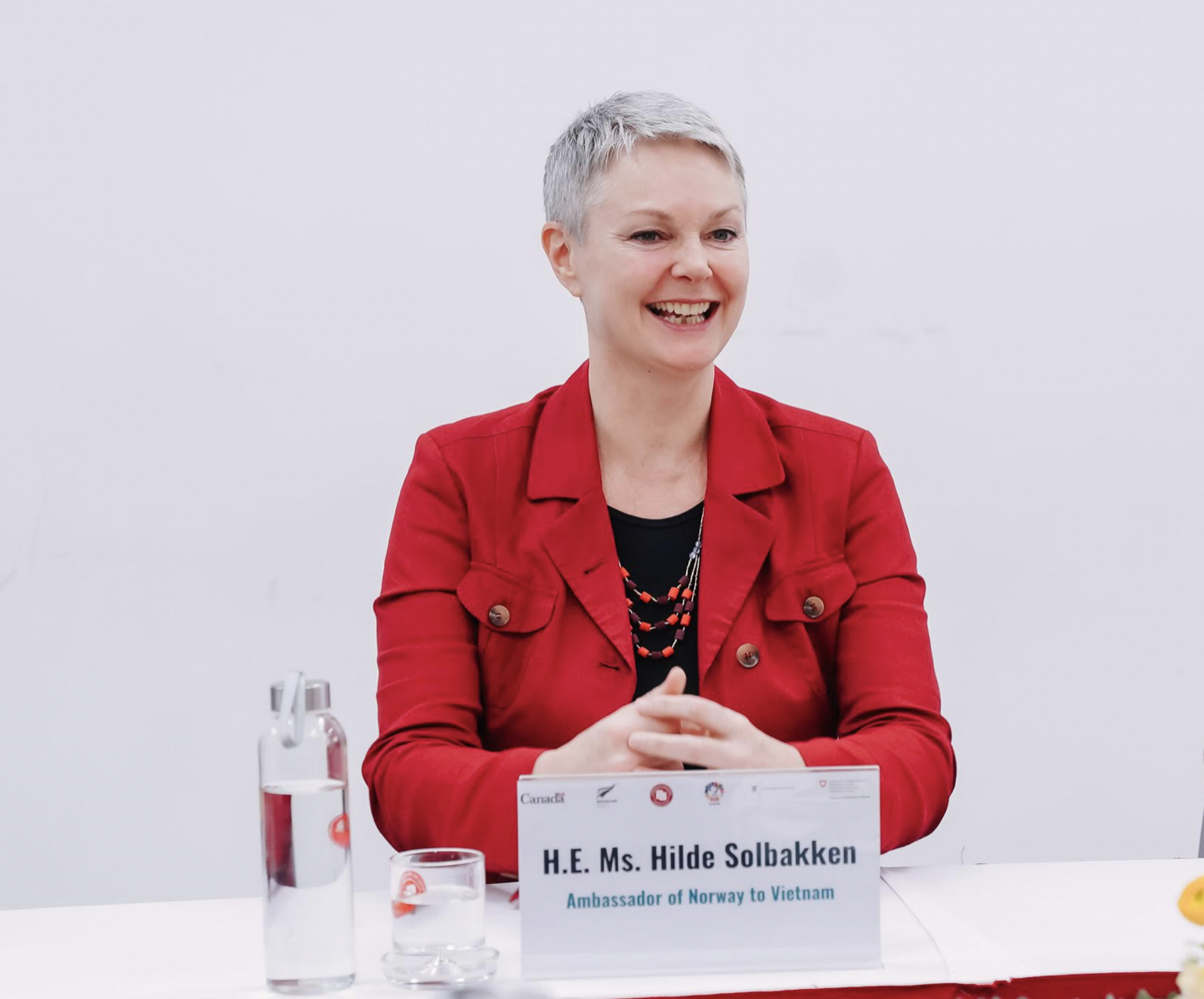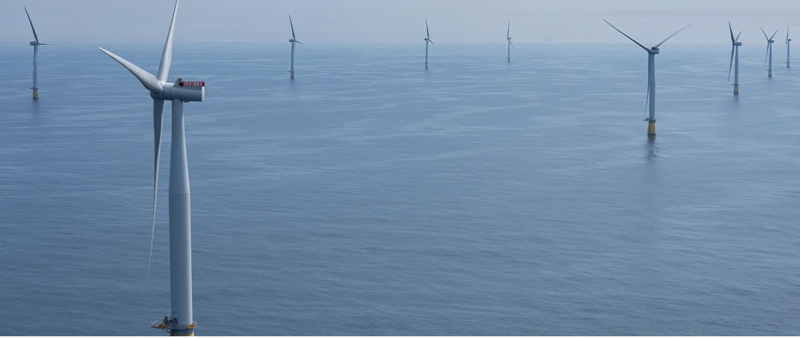Can you tell us about Norway’s renewable energy projects and other investments in Vietnam and their performance so far?
Vietnam is one of the world’s fastest-growing economies, with a corresponding need for more clean energy. As a consequence, it is becoming an increasingly attractive market for renewable energy investors, including Norwegian companies. The adoption in May 2023 of the long-awaited Power Development Plan VIII (PDP8) was an important step along the way to establishing the necessary regulatory framework for the sector to develop.
I am happy to see the active engagement of Norwegian companies in Vietnam’s renewable energy sector. I would like to name some that I believe are well known in the local renewable energy community.
Mainstream Renewable Power entered the Vietnamese market in 2016 with offices both in Hanoi and Ho Chi Minh City and is now a developer with over 2.3 GW gross capacity across three projects. It is currently developing one of the country’s first and largest offshore wind farms, the 1.4 GW Soc Trang Offshore Wind project in the Mekong Delta’s Soc Trang province, and has a 500 MW offshore wind project under development in nearby Ben Tre province and a 405 MW solar portfolio around the central highlands’ Dak Nong province.
Scatec Vietnam was established in Ho Chi Minh City in 2019 and now owns and operates the Dam Nai Wind farm in south-central Ninh Thuan province - the “renewable energy capital” of Vietnam - with a combined capacity of 39MW and providing 123 GWh of clean energy per annum to Vietnamese consumers. The company’s strategy is to expand in the renewable energy sector in synergy with the Vietnamese Government’s energy development goal.
Norsk Solar, meanwhile, is a fast-growing independent solar power producer with a particular focus on the commercial and industrial space in emerging markets. In 2021, it entered into an 11-MW long-term electricity purchase agreement with Central Retail in Vietnam. In 2023, it signed a new deal with Vietnam’s CME Solar to advance renewable energy initiatives in the country, especially solar energy solutions.
Previously known as Statoil, Equinor established a commercial presence in Vietnam in 2021 but has a long-lasting relationship with PetroVietnam dating back to the 1990s. It is a leading international energy company with headquarters in Norway and offices in 30 countries and territories. Equinor’s ambition is to utilize its 50 years of offshore experience and broad energy competence to support Vietnam in developing an offshore wind sector, paving the way for growth in renewables. It has already signed two MoUs with PetroVietnam for strategic cooperation, the first in offshore wind, signed in 2021, and the other expanding collaboration to include low-carbon solutions, signed in November 2023.
I am very pleased to see interest among Norwegian companies in the Vietnamese market, to grow their business and contribute to the country’s sustainable development and green shift goals.
Why did Norwegian companies choose Vietnam to invest in and develop renewable energy projects?
Vietnam and Norway are among the signatories to the Paris Agreement. We are both ocean nations and thus very vulnerable to climate change. A shift to cleaner and renewable energies is needed to help Vietnam achieve its net-zero commitment by 2050 and become a higher middle-income country by 2045.
I believe the prospects for renewable energy development and energy transition in Vietnam are promising.
The country has abundant natural resources suitable for renewable energy, such as a long coastline, strong and stable wind speeds, and high average solar radiation etc. We are encouraged by the strong commitment of the Vietnamese Government to renewable energy through various policies and plans, including the PDP8, which aims to significantly increase the share of renewables in the energy mix. Under its Decision No. 500, Vietnamese Government targets an increase in renewable energy sources for electricity production by 30.9-39.2 per cent by 2030, and 67.5-71.5 per cent by 2050.
Of course, there are challenges, for example in grid infrastructure, regulatory barriers, land issues, and investment risks. This is inevitable. We all face challenges in making such a transition. That is why cooperation is crucial, and Norway is ready to share our experience and learn from this process together with Vietnam.
What are the challenges in developing renewable energy in Vietnam?
Like anywhere in the world, the development of renewable energy is complex. Grid capacity and stability have been seen as key technical barriers. To ensure the reliable integration of renewable energy, it is essential to invest in grid modernization and the enhancement of the transmission and distribution networks to handle the increased load from renewable energy sources. Because solar and wind power fluctuate, development of a Battery Energy Storage System (BESS) will also be needed to ensure stability in power supply at peak times and store excessive energy.
Financing is another challenge. In addition to their perceived risks, renewable energy projects require significant investments upfront and have long payback periods. Thus, securing adequate financial sources and making use of financial instruments that incentivize green solutions is crucial. Land use can be an issue for large-scale renewable energy projects, which often require significant areas of land. Finally, to succeed, we need to build social acceptance and transition the workforce from traditional energy sectors to renewables.

At COP26, COP27, and COP28, Vietnam reaffirmed its commitment to achieving net-zero emissions by 2050. How would you evaluate the pace of its energy transition towards this goal?
Vietnam has been on the right track towards reaching this goal. The country’s energy transition is progressing, driven by strong government commitments. From our own experience in Norway, we know it takes time to develop new regulatory frameworks and put an enabling environment in place.
I would like to congratulate the Vietnamese Government on its recent adoption of a direct power purchasing agreement (DPPA), in early July. This is a milestone towards the country’s net-zero commitment by 2050 and for solar projects in the short term. The new policy allows corporations to directly purchase electricity from renewable energy generators via private transmission line or national grid. It will attract more investment into the renewable energy projects and thereby promoting sustainability and efficiency of electricity market. The announcement of pilot offshore wind projects will also be important to kick-start the development of the country’s new industry.
Such efforts have contributed to Vietnam ranking 32nd in the world energy transition index in the “Fostering Effective Energy Transition 2024” report from the World Economic Forum (WEF). However, the report also indicates that momentum for energy transition is slowing. While increasing wind and solar energy adoption, investment in clean energy has not reached the necessary speed to achieve net-zero emissions by 2050, especially in energy efficiency, electrification of the grid, and the adoption of low-carbon energy sources and fuels.
Achieving net-zero emissions by 2050 will require sustained efforts to address infrastructure, regulatory, and financial challenges. Continued focus on technological innovation, energy efficiency, and grid modernization will be critical to maintaining and accelerating the momentum for energy transition.
We are all grappling with cutting emissions and doing it quickly, and international cooperation and the sharing of best practices will be vital to succeed in ensuring progress and preventing further global warming.
What contribution is Norway making towards boosting Vietnam’s energy transition and what is its significance?
Assisting Vietnam in its energy transition is one of Norway’s priorities as a Just Energy Transition Partnership (JETP) partner.
In this regard, we very much appreciate our partnerships with the Vietnamese Government, relevant ministries such as the Ministry of Natural Resources and Environment (MoNRE), through its Vietnam Administration of Seas and Islands (VASI), and the Ministry of Industry and Trade, through its Electricity and Renewable Energy Authority (EREA), local authorities, and the international community, including the United Nations Development Program (UNDP), in our work to assist Vietnam with its energy transition.
In terms of policy development, we have worked with MoNRE and UNDP on the development of Vietnam’s first Marine Spatial Planning (MSP) Framework, which was recently adopted by the National Assembly.
Offshore wind has the potential to be a significant part of the solution for energy transition. An MSP framework is crucial to ensure we use the sea in a sustainable way to support the development of both existing and new marine industries, promote job creation and sustainable value creation, and facilitate a green transition, while taking care of marine ecosystems.
We are also working with relevant central and local authorities to scale up co-processing in the country’s cement industry. Vietnam is the third-largest cement producer in the world, after China and India, and the country’s cement industry accounts for 20-22 per cent of total greenhouse gas (GHG) emissions. By using non-recyclable plastic waste as fuel in cement kilns instead of coal, co-processing helps to not only address the challenge of plastic pollution but also reduces GHG emissions. Co-processing is a win-win solution that benefits both the environment and businesses, while contributing greatly to energy transition goals.
Norway is a co-chair of the Global Energy Alliance for People and Planet (GEAPP), which has launched two signature initiatives, including a BESS consortium that aims to secure 5 GW of energy storage commitments by the end of 2024 and fully deploy 5 GW of BESS infrastructure across 30 countries and territories by 2030. We encourage Vietnam to join the BESS consortium to benefit from its global projects and network in strengthening its grid for adoption of high levels of renewable energy development in Vietnam.
What are Norway’s future plans for developing renewable energy in Vietnam?
The Embassy in Hanoi, our Commercial Section, called Innovation Norway, and Norwegian businesses will continue our ongoing work to assist Vietnam in its energy transition process, with an emphasis on the implementation of MSP, the scaling up of co-processing in cement production, and the development of Vietnam’s offshore wind industry.
We are grateful for the close and constructive partnership with our national, local, and international partners, and look forward to this continuing in the time to come.
We are keen on helping Vietnam reach its goals for the benefit of the country and the global climate.









 Google translate
Google translate